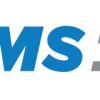“911 communications center ... press 1 for police, 2 for fire, 3 for ambulance ...”
We joke, but are 911 dispatch and communications centers really that far off? Is this, indeed, a revisited direction of the future for call center services?
Here’s five insights into changes public safety dispatchers are experiencing from one EMS professional.
#1 Integration and Sharing
Records management systems (RMS) are taking more of the spotlight -- even now -- to allow prior data into the equation of information sharing. Voice, text, picture and video files can be shared within a CAD system between any and all users. What was once archived data can now become active data, for all to see.
Pre-plans from a third-party software system can be integrated right into your CAD software. Futuristic apps can share live streaming video of the smoke plume that you see looking out from your window, but from the perspective of the bystander standing on the sidewalk of the residence.
For that MVC that you’re responding to, a snapshot of the license plate could populate the registered owner’s name, which data mines his or her prior experiences within the dispatch system and your PCR software, or even a statewide medical record repository. As a result, you may be able to know the name and medical history of your patient before you even arrive on scene.
#2 Call Prioritizing
We’re already used to prioritized dispatch codes and different elements of system status management within EMS, but the future of call prioritizing will likely be a significant step up.
The advancement of algorithms can help to aid 911 centers in determining new incidents versus repeat incidents, which units should be sent to each scene based upon unit types, when it’s appropriate to stack calls and how to more accurately dispatch responders based on call acuity.
What we currently hear as “Alpha, Bravo, Charlie” now, may become significantly more sophisticated as new data enters into the prioritized world of tomorrow.
#3 Advanced Automation
We laugh, but are we really that far off from people-less dispatch centers?
As we progress into our highly-tech savvy culture, will this trend continue into 2030 ... 2050? Or, will call-taker and dispatcher software transform into advanced voice recognition software that is based upon algorithms, picture identification to describe a patient’s condition, and breathing pattern recognition to determine audible breath sounds? Will the call taker and dispatcher of the future be a computer, rather than a person working at a computer?
#4 Caller Locating
We’ve often heard the complaint that my GPS app can determine where I’m located down to the foot, but 911 can only pinpoint me to a one-mile radius. Well, the CAD technology is changing that.
Advanced software and geo-locating abilities will provide 911 call centers with militaristic precision for locating callers. This will apply not only to voice calls, but also to texts and even to pictures sent.
Think about your map function on your phone, particularly, the street view option. Imagine a locating software that scans the billions of images that could be produced by the Google cars that drive on every street to populate those images ... and then compares it to your call center’s catchment area. This is just a snippet of caller locating for the future.
#5 Security and Compliance
All of this technology ... all of this anticipation and speculation ... requires increased security. What will likely be the future of technological advancements in 911 call centers will also pose a need for system compliance.
Advancements in software come at a financial cost, but they also come at a system and societal benefit. Securing CAD software from the risk of hacking and cyber terrorism will become an even larger focus for the future. Establishing a strong, secure network with safety nets and back-ups will be paramount in the event of a system crash, degradation or overload.
The requirement for universal compliance will change the way that communication centers operate ... or even exist. Looking ahead toward the future ... is your center ready for all of this? Is it preparing to become “future-proofed?”
About the Author
Tim Nowak, AAS, BS, NRP, CCEMT-P, SPO, MPO, is the founder and CEO of Emergency Medical Solutions, LLC, an independent EMS training and consulting company that he developed in 2010. He’s been involved in EMS and emergency services since 2002, and has worked as an EMT, paramedic and critical care paramedic in a variety of urban, suburban, rural and hospital settings. He’s also been involved as an EMS educator, consultant, item writer, clinical preceptor, board member, reference product developer, firefighter and HazMat technician throughout his career.













